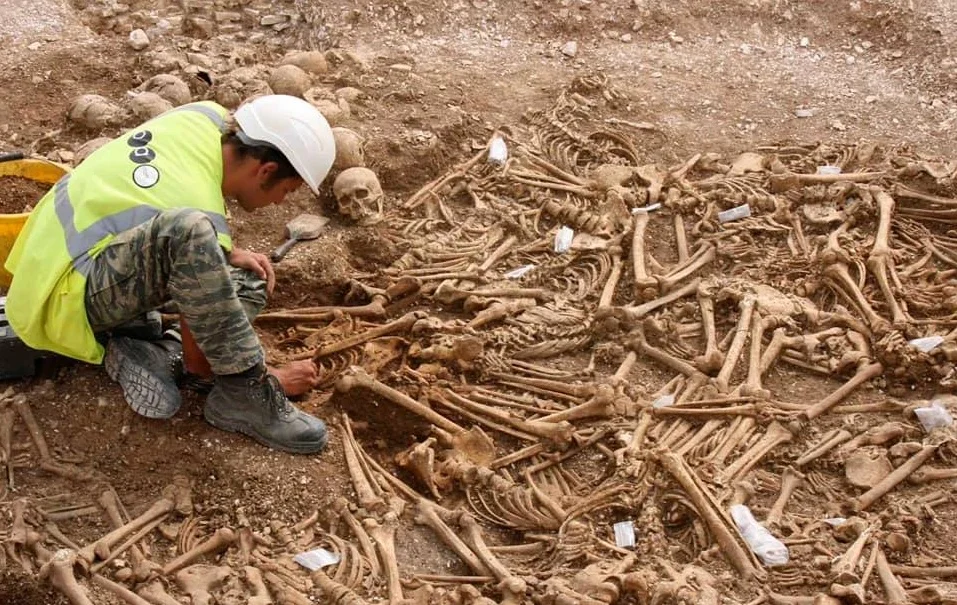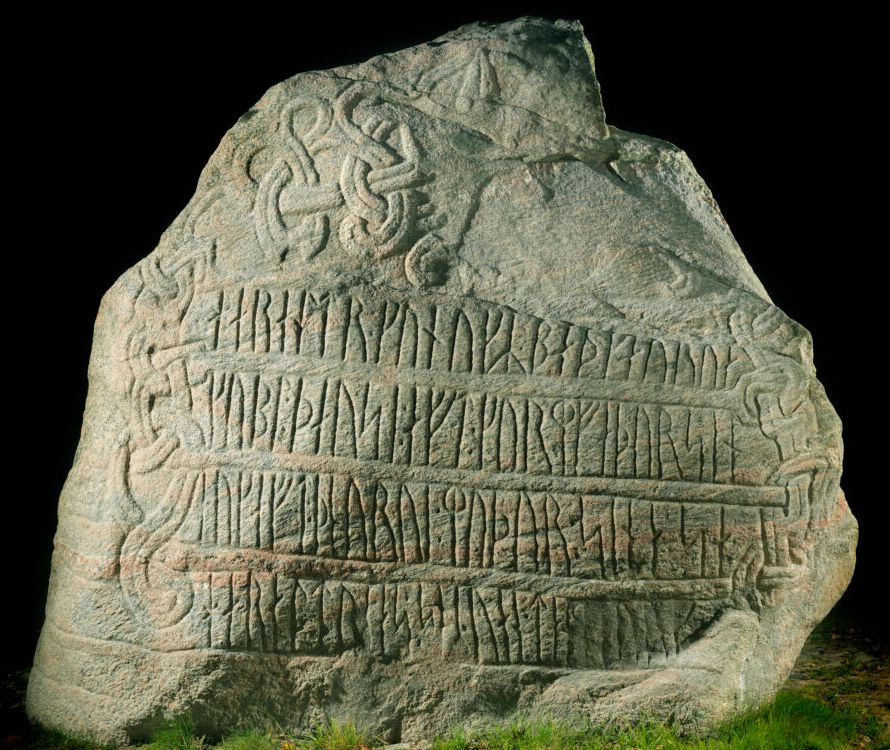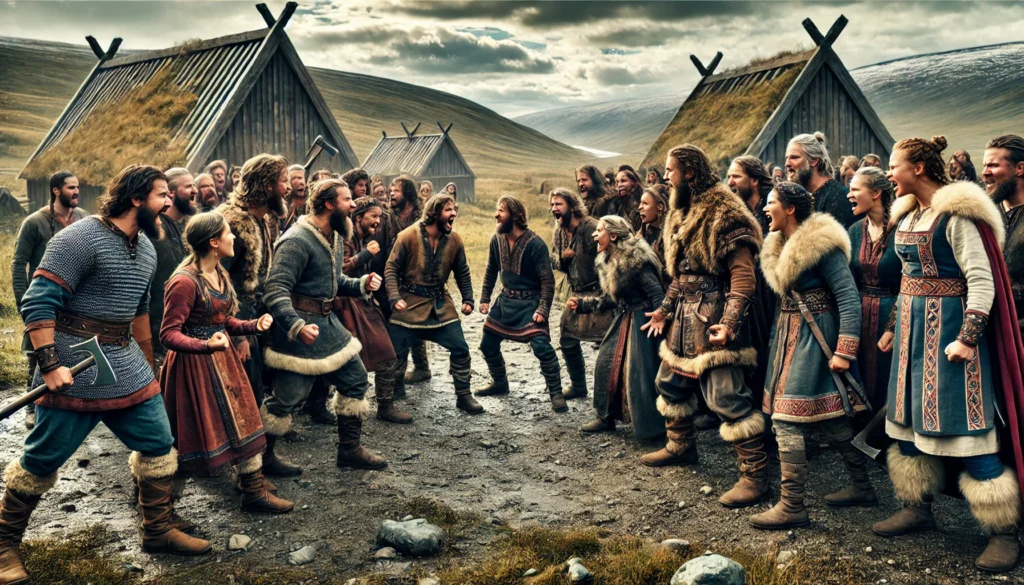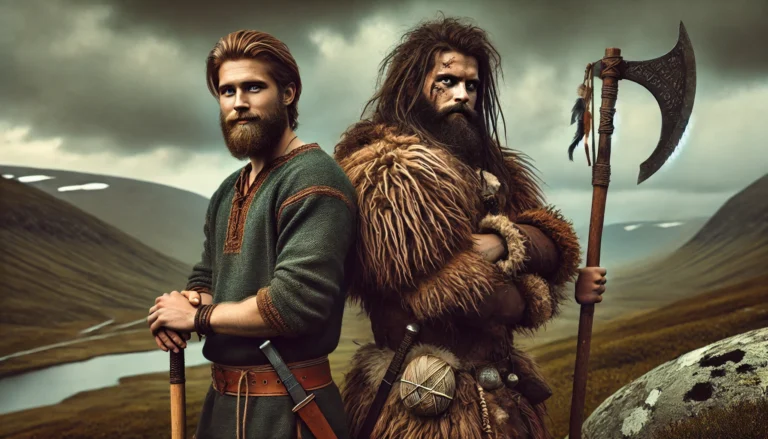According to accepted history, the Danes were the main raiding Vikings, who devastated communities in the British Isles and France.
The Norwegian Vikings were the explorers, colonizing Iceland and Greenland, and sailing as far as North America.
However, despite this, new evidence suggests that the Norwegians had a more violent society than their Danish cousins.
The Story of Skeletal Remains

This story begins with the examination of Viking skeletal remains from Norway and Denmark by a team from the University of South Florida.
They compared two groups of skeletons, 30 from Norway and 82 from Denmark.
They found that 11 of the 30 Norwegian skeletons, or 37%, had suffered violent deaths, usually being assaulted with a bladed or a pointed weapon. Meanwhile, only six of the 82 Danish skeletons, or 7%, seem to have met a violent end.
Plus, in those cases, the form of violence seems to have been execution by hanging or decapitation.
This evidence doesn’t change the overall narrative of the Danes as pillagers and the Norwegians as explorers.
The Danish Vikings who died because of the raiding activity were buried overseas.
A mass burial at Ridgeway Hill in Dorset, England contains the remains of 54 Scandinavian men.
Many show signs of trauma with broken vertebrae, jawbones, and skulls.
There are an average of four detectable wounds per person.
This has led archaeologists to suggest that these Vikings were executed by the Anglo-Saxons, perhaps as part of the events of the St Bryce’s Day massacre in 1002.
It happened after the Vikings were accused of cursing King Aethelred the Unready, so he ordered the killing of many Danes in his territory.
The Vikings, under Sweyn Forkbeard, retaliated over the next few years. Another 37 skeletons found at St John’s College in Oxford are also thought to relate to the massacre.
Archaeologists have also found the remains of 264 bodies buried in the English town of Repton, where the Great Heathen Army of Danish Vikings made camp in 873 during their invasion of England.
The weapons and coin present indicate that the bodies of the mostly men in this grave were Viking, and at least 40% showed signs of violent injuries.
But while Danish Vikings seem very likely to have died violently overseas, at home, they were more likely to die of natural causes.
It is hard to determine whether this would have been considered a good thing by the Danes themselves since Norse mythology suggests that only those who died bravely in battle could go to Valhalla and that this was the desire of all Vikings.
But it is also unclear whether this was a common belief in the Viking Age, or whether the focus on Valhalla is something that has been magnified by the Christian authors who recorded the myths.
In contrast. violence seems to have been a very common cause of death among their Norwegian cousins.
Urban vs Rural Living

As well as being more likely to have evidence of violence, Norwegian Vikings were much more likely to be buried with weapons, especially swords, than their Danish neighbors.
In fact, swords, expensive weapons that were a symbol of status, seem to have been much more common in Norway than in Denmark.
More than 3,000 Viking Age swords have been discovered across Norway over the years, while only a few dozen have been found in Denmark.
The researchers noted:
“With well over ten times as many weapon graves in Norway as in Denmark, and a population perhaps one-fifth of the Danish, we can conclude that weapons were much more – perhaps fifty times more – common as burial furniture in Norway compared to Denmark… This is not proof that weapons per se were more common among the Norwegian population than among the Danish, but nevertheless a strong indication that carrying weapons was a more important part of identity in Norway than in Denmark.”
To explain these differences, historians have pointed to cultural differences between the Danish and Norwegian Vikings.
Danish society seems to have been more organized than Norwegian society.
This must at least in part be due to the smaller and more hospitable land that they occupied, which allowed for relatively densely populated settlements.
Norway has a sprawling, rugged landscape with harsher weather conditions.
This supported smaller communities that were more spread out, so as not to place excessive stress on the available resources.

The Danes lived in large communities, that were often well-fortified, something that it would have required significant manpower to build and maintain.
This would have required stricter social organization.
That this was the case is also supported by the evidence of surviving runestones.
Inscriptions from Denmark make much greater use of honorific titles, such as Karl and Jarl, than Norwegian inscriptions, suggesting that hierarchy was considered important.
In fact, many more runestones survive from Denmark than from Norway, suggesting this kind of monumental commemoration was also more important to the Danes.
As a more organized society, the Danes may have been better at controlling violence and punishing lawbreakers.
This seems evident in the fact that the few Danish skeletons that do seem to have met violent ends look like they may have been executed.
The fact that more Norwegian Vikings seem to have possessed weapons and that they were more likely to die of violence and one another’s hands, suggests a more vigilante approach to violence, with individuals and families settling disputes between themselves with violence.
Day to Day Violence

That the Norwegian Vikings had a fairly violent society is supported by the evidence of the Icelandic sagas, bearing in mind that Iceland was settled by Norwegian Vikings.
Iceland also resembled Norway more in terms of settlement patterns, with more small, isolated communities.
While Iceland had law codes and Thing meetings that acted both as legislative and judicial bodies when someone was found guilty of a crime they were either outlawed, which meant that all their property was confiscated and they could be killed on sight, or the court respected the right of the family to seek personal vengeance.
Vengeance usually took the form of duels or honor killings and rarely seemed to end with just one death. Each new death invited another, kicking off multigenerational blood feuds that could decimate entire families.
Feuds could be ended if one family paid a man-price for a person’s death, but just as often, it ended with an entire family dead and the other seizing their property.
There is evidence that smaller families were sometimes targeted for exactly that purpose.
Evidence of these kinds of killings also survives in Icelandic graves.
For example, a Christian graveyard at Mosfell in Iceland, dated to 855-1015, contains the remains of a man who seems to have been killed with a bladed weapon like an ax or a sword.
He is buried in Christian fashion on consecrated ground and is the only occupant of the cemetery who seems to have suffered this type of death.
This suggests that he was murdered by a fellow community member, rather than killed in some other kind of disaster.
That similar traditions of vengeance of blood feuds existed in Norway is confirmed by surviving law codes.
There are multiple references to holmgang, which was a duel between an accuser and an accused.
Outlawing men and making them fugitives that could legally be killed by anyone, is also mentioned in Norwegian law.
What About Sweden ?

The new study of Danish and Norwegian burials did not include Sweden, so it was not included in the conclusions.
However, a 2018 study looked at the skeletal remains of Viking burials at Lund, Vannhög, Fjällking, Kopparsvik, and Slite, and less than 5% seem to show weapon wounds, matching Denmark.
A broader study from 2021 of more than 700 Swedish skeletons from the Malaren Valley found a weapon wound rate of less than 2.5%.
This suggests that Sweden looked more like Denmark when it came it came to social violence.
This is perhaps not surprising as the Swedish Vikings were known as traders, bringing significant wealth into the country and allowing for a sophisticated society.
Of course, it was also the Swedes who were most likely to travel to the Byzantine Empire and join the emperor’s elite Varangian Guard, but they most likely died in their new foreign homes.







